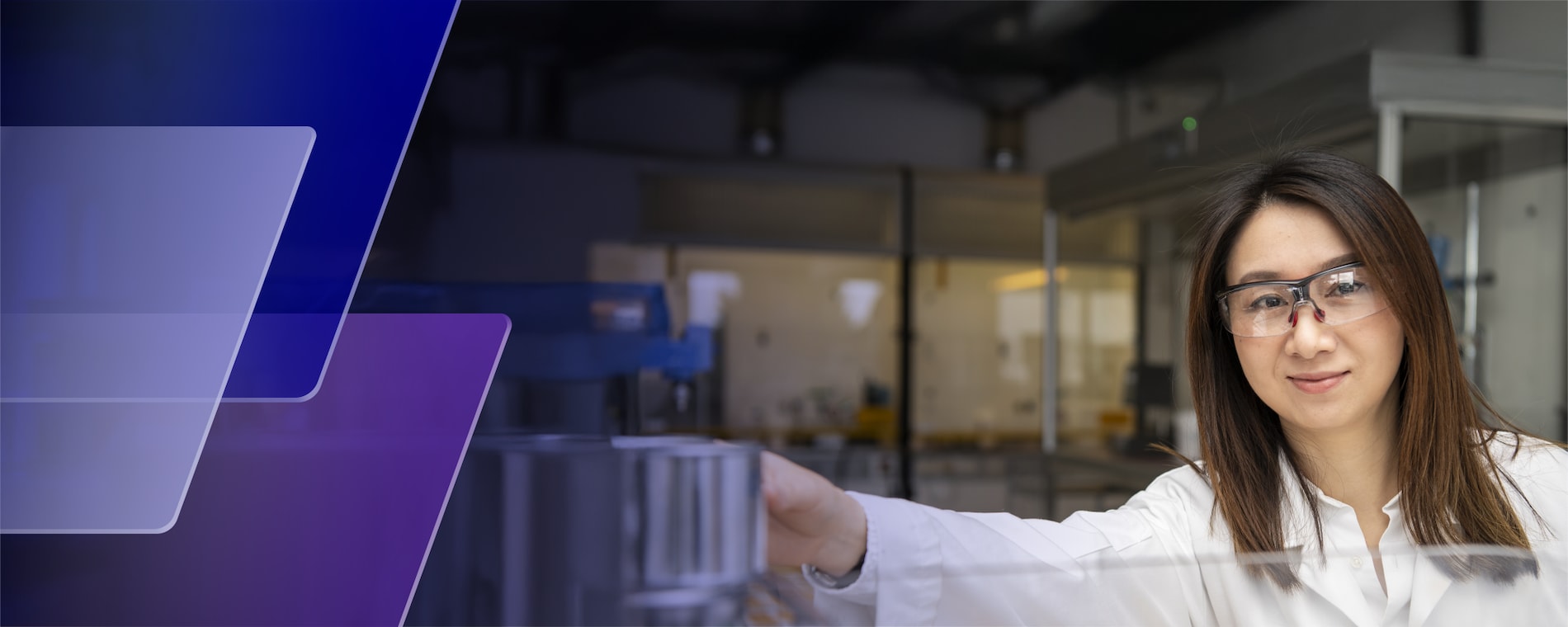For most people, paint is all about how it looks on a particular surface. It generally has one job – to look good – the added bonus is that it also offers all-important protection.
But Anping Cao isn’t most people. A scientist and team leader at our Sassenheim site in the Netherlands, she approaches paint from an entirely different perspective. For Anping, it’s all about diving beneath the surface. Getting in among the myriad of molecules to help give our paint the kind of properties that make it stand out from the crowd.
You could almost describe her as an alchemist of functionality. Whether she’s conjuring up complex chemistry or finessing formulas, the goal is always the same – to help make the ordinary extraordinary. Because surfaces aren’t going to protect themselves.
Anping’s most recent projects have included developing self-healing capabilities (still several years from potentially becoming a reality) and improving the technology in a self-cleaning paint which has already been developed for use on house exteriors.
“I approach paint from a scientific point of view,” says Anping, who joined AkzoNobel in 2020. “I’m looking through an imaginary lens that zooms in and out, trying to find out what chemical structure works and what mechanical properties are needed.
“My daily work involves designing and conducting experiments, finding or making the ingredients we need and connecting with our development teams around the world.”
Prototype technology
The self-healing functionality she’s been working on operates effectively at room temperature – so it’s got the potential to be widely used. It’s now at the stage where the prototype technology is being evaluated by some of our businesses to determine how it could suit their various needs.
“If we continue, it could still be up to ten years before we have a final result,” continues Anping. “The key thing is making sure what we’re developing has the necessary durability. Because self-healing would be additional functionality that we offer with a particular product. So we need to make sure there’s no compromise in terms of chemical resistance and scratch resistance, for example.”
That’s where all the chemistry kicks in, something Anping is clearly passionate about. And she’s currently using all her expertise and enthusiasm to get to grips with the challenge of taking the existing self-cleaning technology to another level.
Search for better
Already commercially available, the products repel dirt by using nano-particles to help combat the effects of weathering. However, driven by our constant search for better, work has begun to further improve their performance.
“We’re looking into adapting the formula, but we have to get the right balance, because we don’t want to interfere with the protective properties of the paint,” explains Anping, who leads a team of four colleagues. “So we can’t just add more nano-particles, we need to redesign some of the chemistry.”
Delving into paint at the molecular level to perfect performance and functionality is Paint the Future writ large. Or as Anping puts it, she’s painting the future with curiosity. “I’m very much driven by technical curiosity and a commitment to sustainability,” she says. “It’s about gathering knowledge, finding answers and knowing that you’re standing on the shoulders of giants – carrying on the work of those that came before you.
“We’re solving problems, innovating to develop new technologies and effectively working five to ten years ahead of ourselves, because that’s how long it will take for some of the things we’re working on to become a reality. If you look at it that way, we really are painting the future.”

Inspired by Anping's story?
Take a look at the exciting opportunities we have available for a career in science.




